Araucan chickens may be for you if you are looking for unique backyard chickens that lay blue eggs; the Araucana may be the perfect breed for your hobby farm or backyard chicken coop. These beautiful birds come with some unique challenges, but they also have some desirable traits that make them popular for hobby farmers and backyard enthusiasts. This guide will discuss all you need to know about Araucanas before deciding if they are the right bird for your own flock.

The Story of the Araucana Chicken Breed: A Brief History
The Araucana chicken breed originates from South America. The name “Araucana” comes from the Arauca Indians who inhabited what is now Chile.
These chickens were brought to Europe in the 1920s and were first introduced into the United States in the 1970s.
Wikipedia
The Araucana chicken breed is a result of a cross between the Collonca and Quetros breeds from Northern Chile. The Colloncas are rumpless and lay blue eggs, while the Quetros have ear tufts and tails but do not lay blue eggs. Thus, the Araucana chicken breed is known for its ability to lay blue eggs.
The APA (American Poultry Association) recognized Araucanas in 1976.
Araucana’s Personality And Temperament
The personality of the Araucana chicken can vary depending on the bird. Some birds are flighty and do not like handling or touching, while others are docile and enjoy being held.
It is essential to spend time near your chickens and handle them often, so they get used to human interaction. This will help make them friendlier domestic chickens.
Araucanas are not any louder than other breeds of chicken, but they tend to be more chatty than many different breeds of domestic chickens.
Araucanas are active chickens born to be free rangers who love to forage for tasty treats.
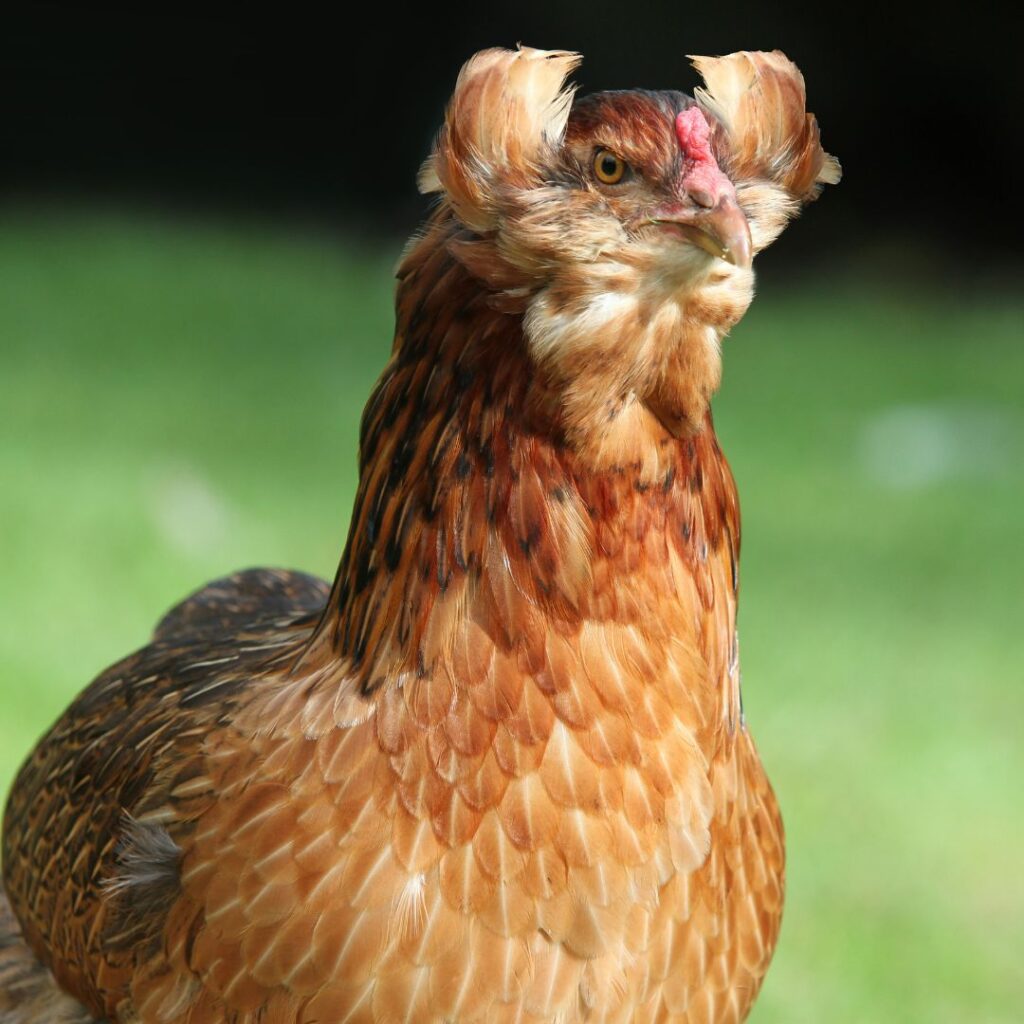
The Appearance of The Araucana Chicken
Araucana chickens can be identified easily by their unique physical features. They have a small pea comb on the head, which helps to protect them from frostbite in cold climates. They also have ear tufts – an obvious feather cluster around their ears. Perhaps the most distinguishing characteristic of Araucanas is their lack of a tail. They are rumpless, meaning they have no tailbone or tail feathers.
Breed Variations/ Feather Colors
There are five recognized color varieties of Araucanas. Each breed variation has its own unique set of markings and personalities. They each possess small pea combs and ear tufts and are similar in size. The American Poultry Association also recognizes all these variations.
Black Araucana
Black Araucanas have black feathers. They have slim bodies with long legs. Their neck is relatively long, and they have small heads.
Did You Know?
There are no true black Araucanas. The Black Araucana is a cross between the Araucana and the Australorp. Breeders created this cross to give the Araucana chicken black feathers.
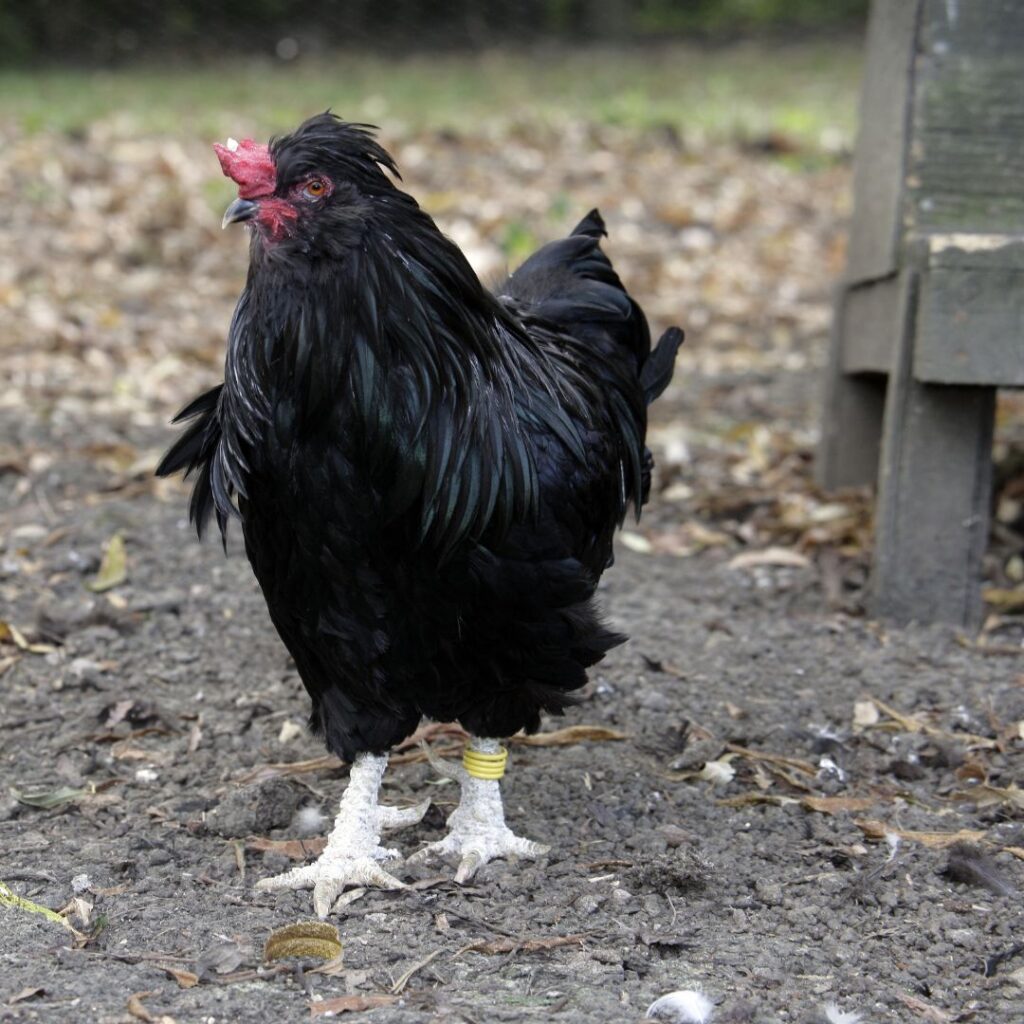
Black Breasted Red Araucana
Black Breasted Red Araucanas are red feathered with black on their breast. They have slim bodies with long legs. Their neck is relatively long, and they have a small head.
Did You Know?
The Black Breasted Red Araucana is a crossed breed of the Araucana and the Rhode Island Red. This cross was created to give the Araucana chicken black red feathers.
Golden Duckwing
The Golden Duckwing is a beautiful Araucana chicken first developed in France. They are smaller than most other Araucana chickens and have a unique appearance with their bright golden plumage and blue-tinted skin.
Fun Fact: Did you know Golden Duckwings are one of the only breeds with blue-tinted skin? This unusual fact is due to a genetic mutation. It causes this distinctive and beautiful plumage. These chickens are sure to stand out in any flock!
Silver Duckwing
The Silver Duckwing is an Araucana chicken well known for its unique coloring. They are silver and white with black flecks on their feathers.
White
The White Araucana chicken is a beautiful bird easily recognizable with its tufted ears. They are small to medium-sized chickens and weigh between four and six pounds. They are popular in Australia, New Zealand, South America, and the United States.

Araucana Hens; Egg Production
The Araucana Hen is known for her production of eggs. She can lay approximately 3 -4 eggs per week, which can significantly help a small backyard flock. Read more about cleaning and storing fresh eggs here.
However, because this hen originated in warmer climates, she does tend to take the winters off from laying. This can be frustrating for hobby farmers counting on her eggs, but it is something natural that can be expected. Read more on how to help your hens lay eggs year-round in this link.
Color, Size, and Taste of The Araucana Egg?
Araucana chickens lay beautiful blue eggs, described as a robin’s blue color. The blue of the shell is even apparent when you crack the egg open, seeing blue on the inside as well (of the shell, not the edible part). This is what sets the Araucana eggs apart from the others.
Some people believe that different egg color has different taste, but the truth is that all eggs are similar in nutritional value, regardless of their size or color. So, whether you’re hatching brown eggs, white eggs, or blue eggs, they are equal when it comes to what’s inside.
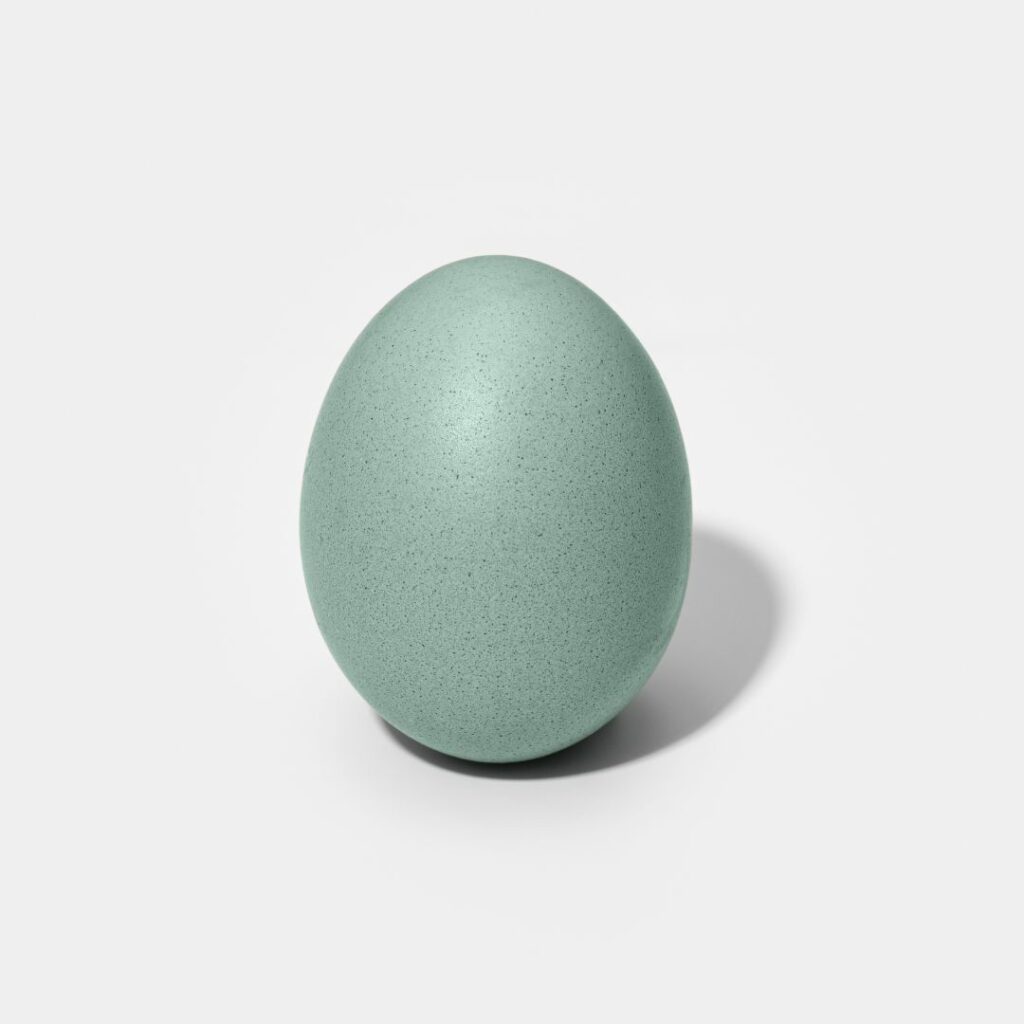
How long does it take an Araucana Hen to begin egg laying?
Araucana hens typically start to lay once they are about 20 to 24 weeks old.
However, if your Araucana matures during the winter months, this may be longer before your hen starts to lay.
Read About Reasons Chickens Stop Laying Eggs here.
What other hens lay colored eggs?
Many colored egg-laying hens are called easter eggers, but that’s a misunderstanding. Colored egg-laying hens come in various breeds, egg sizes, and production (including blue egg layers). Some of the other colored and blue egg layer chickens are:
Ameraucana chickens – large blue eggs (Ameraucana)
Arkansas Blue chickens – medium – large blue eggs.
Cream Legbar– medium blue and sometimes light green eggs (Cream Legbar)
Easter Eggers – medium – large, blue, green, and occasionally pink eggs (source: Easter Eggers)
Olive Eggers – medium – large olive green eggs, no blue egg here! (Olive Eggers)
Whiting True Blue – large – powder blue eggs,
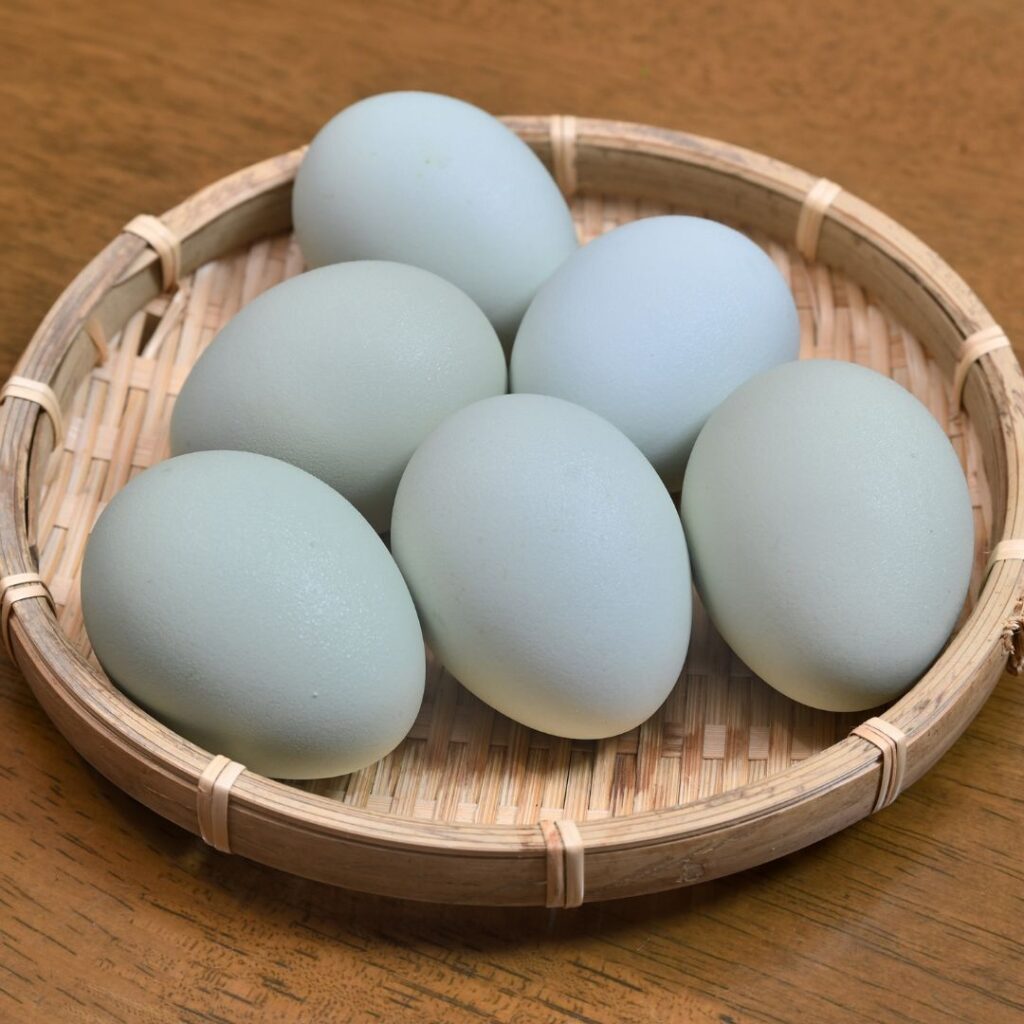
Can Araucana’s be Bred for Meat?
Any chicken can be bred for meat, but the Araucana breed is not known for being a meat bird. They are much smaller than the large fowl breeds intended for a delicious Sunday dinner. Birds more suited to breeding for meat would be the Cornish Cross or even a smaller Cornish Game Hen.
The Chicken Coop for Araucana Chickens
Space
When planning to build a coop for Araucana chickens, leave plenty of room. These birds may be on the smaller side, but they need a minimum of4 square feet of internal coop space each. If you try to fit them into a smaller space, you may see some undesirable behaviors crop up, especially during the winter when they spend more time indoors.
Remember, if you have other larger birds, you’ll need your coop size to accommodate the largest breed you have to avoid any problems.
Larger is always better; this way, your chickens will have room to move around and spread their wings without feeling cramped.
Perch
Keeping your Araucanas happy is essential for both their health and your peace of mind. An affordable, quick and easy way to do this is to provide them with perches of varying heights.
Chickens like to have a place to roost (sleep) off the ground and also want options for perching during the day.
You can use a few upturned buckets or boxes if you have only a few chickens. However, if you have more than 5 or 6 chickens, you may need to invest in some purpose-built roosts.
Whatever type of perch you choose, ensure each bird has about eight to twelve inches of perch space. This helps prevent overcrowding and ensure that your chickens are happy and comfortable.
Nesting Boxes
If you’re thinking of adding Araucanas to your hobby farm, it’s important to provide them with a nesting box that meets their specific requirements.
Araucanas need a 12×12 nesting box for every four hens for a place to lay eggs. Nesting boxes should be made of sturdy materials, such as wood or metal.
The nest’s interior should be lined with soft material, such as straw or hay, to keep the eggs safe and sound. With some good planning, you can easily provide your Araucana chickens with the perfect home.
Feeders and Waterers
It’s vital to ensure you have the right supplies. These birds require a bit more care than some other breeds, but with the proper preparation, they make excellent pets.
One of the essential things you’ll need is a good quality feeder and waterer. These should be large enough to accommodate the number you have in your flock.
Feed and water should always be fresh and clean every day.
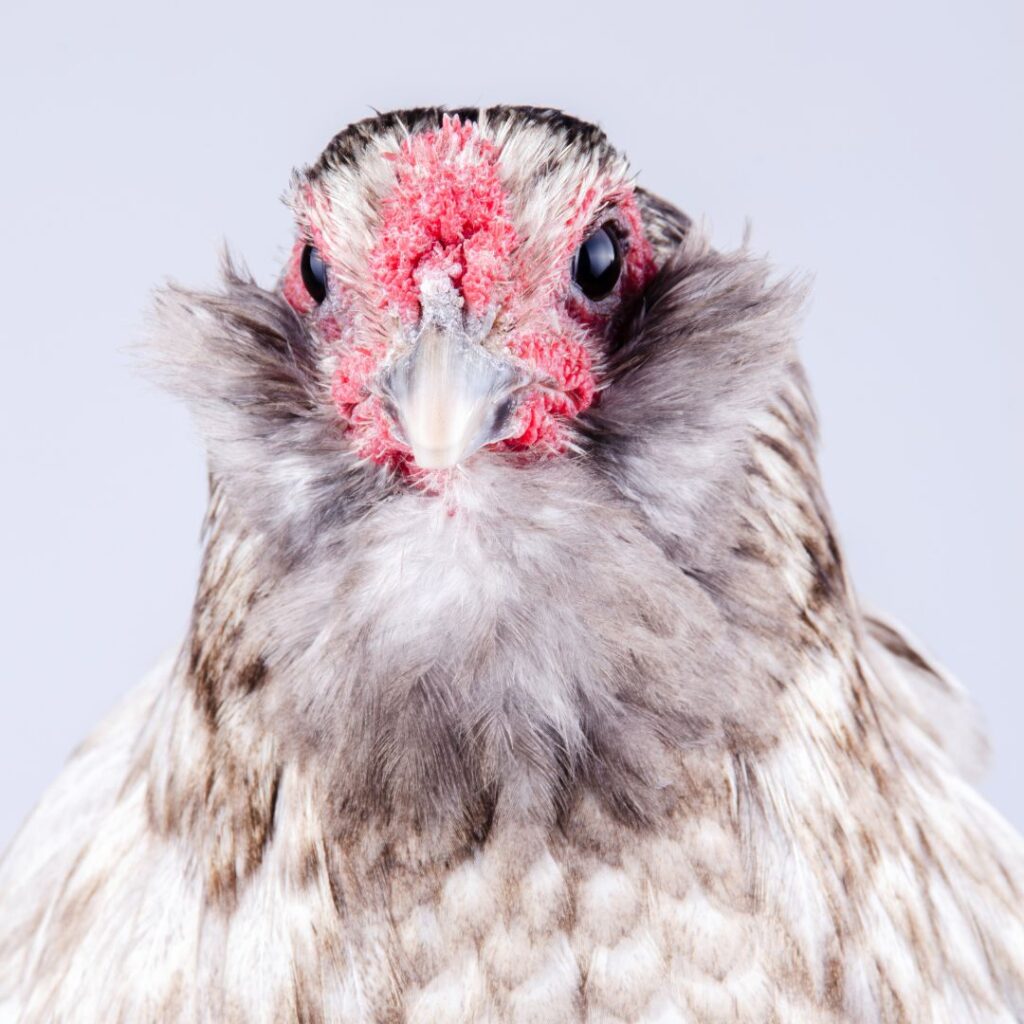
The Outdoor Run
Space -To ensure that your bird has enough space to move around, the outdoor run should be a minimum of 10 to 15 square feet.
Shelter From The Elements – A covered area like a simple tarp, shade cloth (summer), lean-to, or tented area.
These protect from the hot sun, provide a cool spot in the summer and protect from snow and rain in the winter while allowing your birds to get outside and get some exercise and fresh air.
Fencing Height – If you are keeping Araucana chickens known for their ability to fly, you’ll want to consider more than the usual six feet in fencing and go for the higher eight or ten feet fencing.
Be sure to take steps to secure the perimeter of your property to keep predators out.
Some common predators in North America include
- raccoons
- skunks
- opossums
- weasels
- hawks – If these are common for you, consider putting hardware cloth at the top of your outdoor run space.
- owls
- coyotes
- foxes
- bobcats
Dust Bath – Every chicken owner must provide a dust bath area for their birds. No need to fuss; a dug-out area of the run, a kiddie pool, or an old tire filled with dried soil/sand/diatomaceous earth and your bird will be able to not only clean themselves but prevent carrying lice and mites.
Free-Range and Foraging – This is the preferred activity of the Araucana chicken. They love foraging, frolicking, and adventuring whenever and wherever they can.
Cold Hardy and Heat Tolerant; A Versatile Breed
The Araucana is a surprisingly hardy bird, able to withstand both hot and cold weather. Originally from a warmer climate, they have no trouble acclimating to the cold winters.
This is partly due to their small pea comb, which makes them less susceptible to frostbite.
They can handle the heat just as easily, making them a versatile breed.
When housing Araucanas, it is essential to have a secure and well-sealed coop. Adequate ventilation is also vital, as it helps to circulate air and keep the coop moisture-free.
The runs should also be protected from the elements, with a dry area to take refuge.
Fresh water is essential, especially during extreme weather conditions. Ice cubes can help keep the water cool in the summer, while a heated waterer may be necessary for the winter.
Take these simple precautions, and you’ll ensure that your Araucanas are comfortable year-round.
Read About Cold Hardy Chicken Breeds Here.
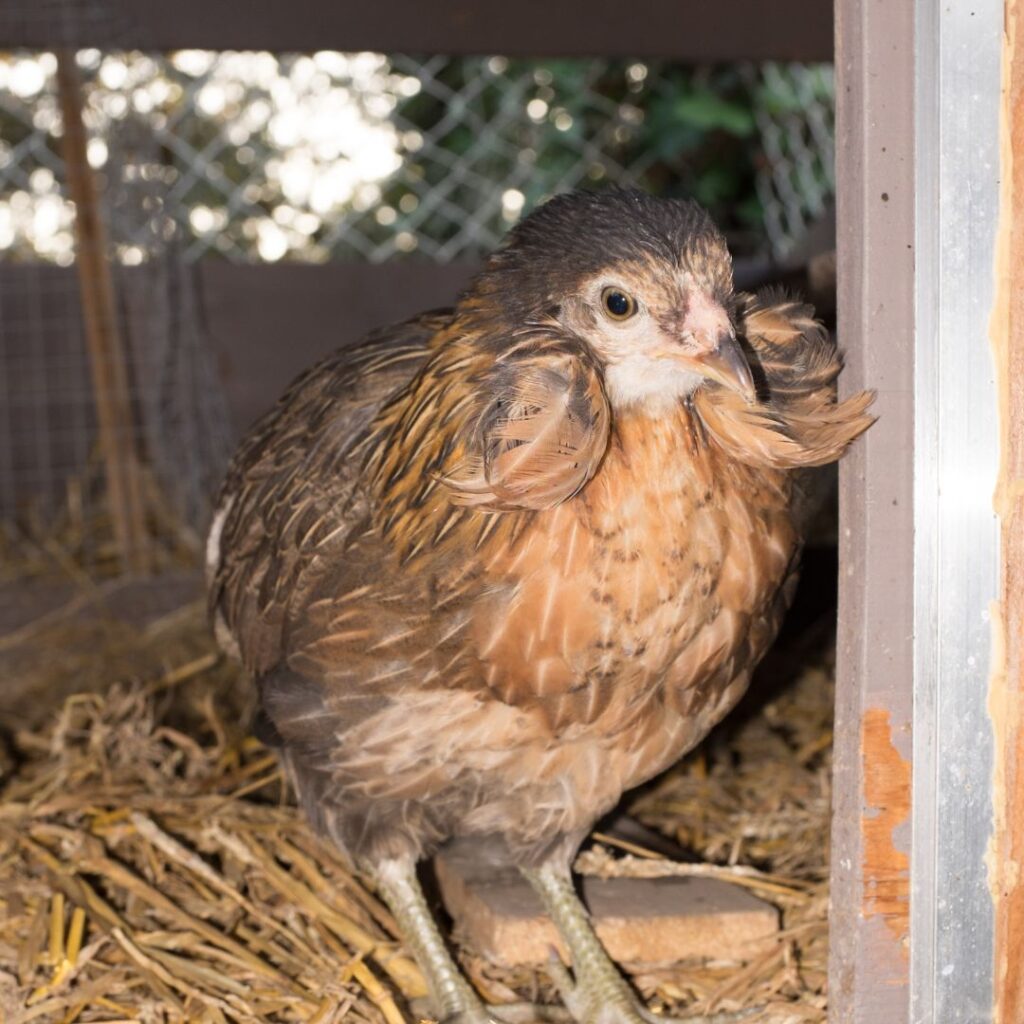
How are the Araucana Chickens with other Chicken Breeds?
All in all, this breed does well with other breeds. As with any breed, roosters can be more territorial and sometimes aggressive. You should choose a rooster not to overpower the size of the hens, meaning you don’t want a large Jersey Giant or Brahma rooster paired with average and smaller-sized birds.
Don’t confuse mixing brown egg layers, white egg layers, and green egg layers with blue egg layers. It’s not the egg color that factors into a cohesive flock.
Potential Health Issues of The Araucana chicken
The Araucana chicken is a breed that is known for its hardiness and healthy nature. However, as with any breed, there are potential health issues that can affect the Auracana.
One potential health issue that can affect Araucana is infertility. This is due to the rumpless gene, which decreases fertility by 10-20%. Some breeders believe another potential health issue for the Auracana is that the offspring’s backs can become shorter as the birds are bred over time. This is also related to the rumpless gene and is not a health issue. However, breeding these birds can sometimes be seen as a disadvantage.
Life Expectancy of an Araucana
The average lifespan is typically six to eight years. However, as with any livestock breed, factors like environment can vary at this age. Factors like feed/diet, predators, and overall conditions of the coop are the most significant factors. Some hobby farmers report having their chickens live ten years and more.
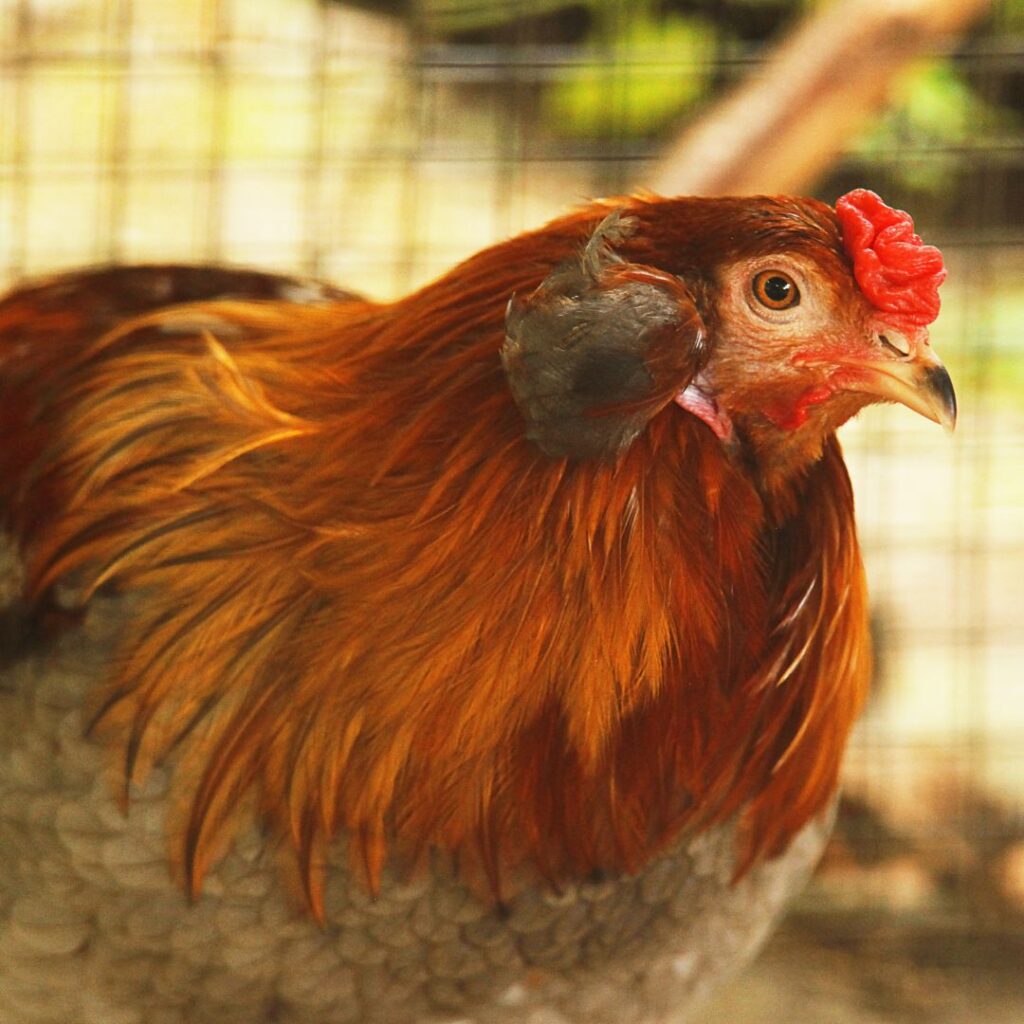
What are the benefits of owning an Araucana chicken?
Araucana chickens are famous for their friendly personality and high energy level. These birds are perfect for families that need a lively pet that can keep up with their kids.
Just open up the chicken coop, watch and listen as your Araucanas forage and chat it up across your property.
Be warned that Araucana chickens prefer spacious backyards, and their rambunxious spirit isn’t always contained in a suburban backyard. If you have fussy neighbors, these may not be the right breed for your neighborhood.
However, if you have the space and the patience, Araucana chickens make wonderful pets. While these chickens lay blue eggs, they offer so much more. They are affectionate birds that will quickly become a part of your hobby farm and heart.
If you are new to keeping chickens, read our guide for beginners.
For those looking for a small ornamental chicken to start your hobby flock, check out our articles on the Silver and Golden Sebright Chickens and the Mille Fleur D’Uccle Chickens.
Be Sure To Read About Our 15+ Top Egg Laying Hens.
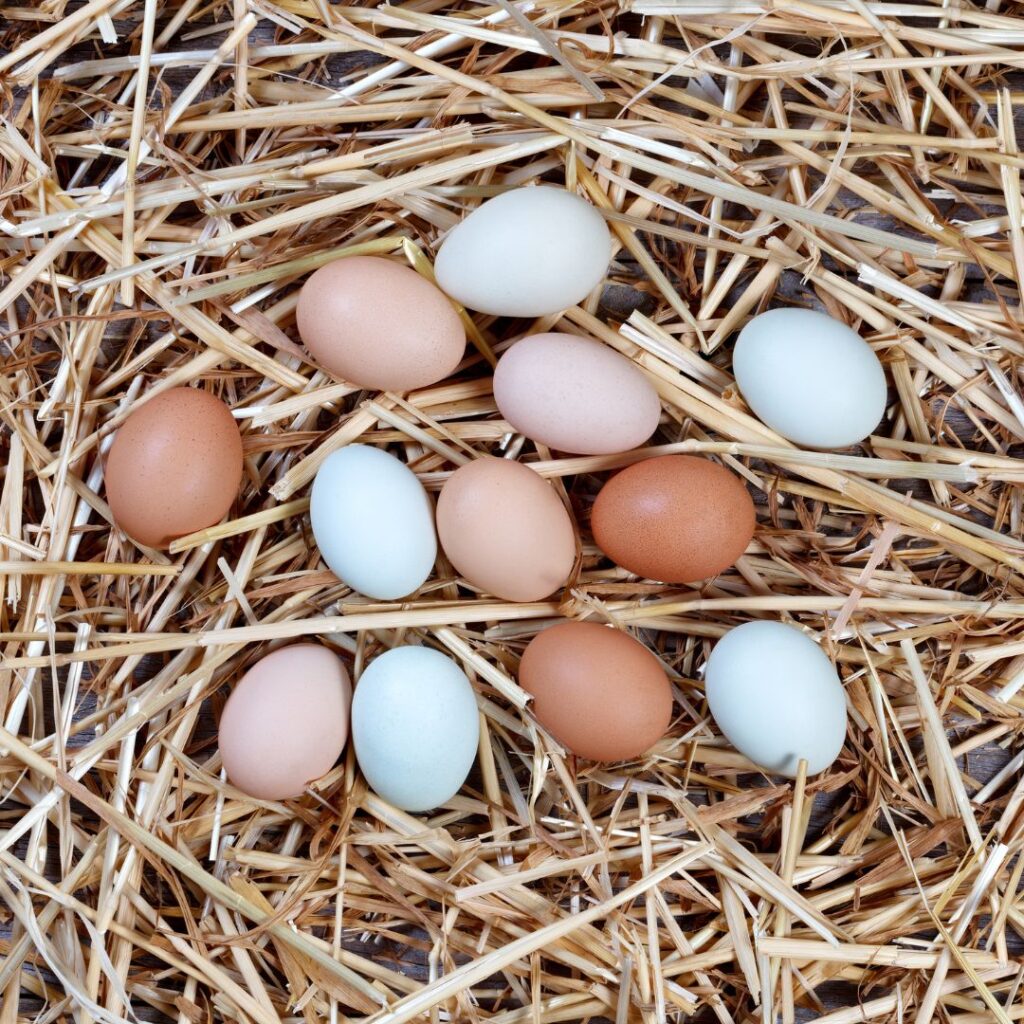

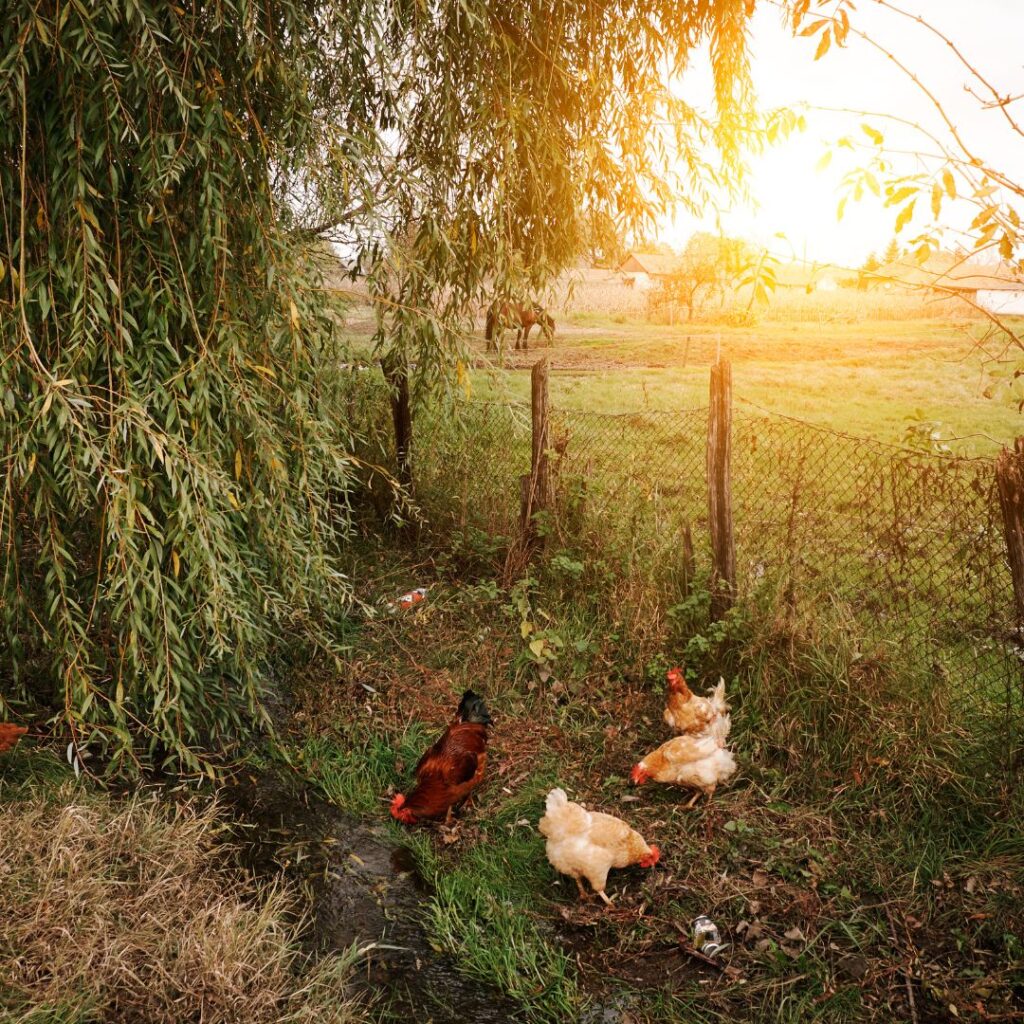
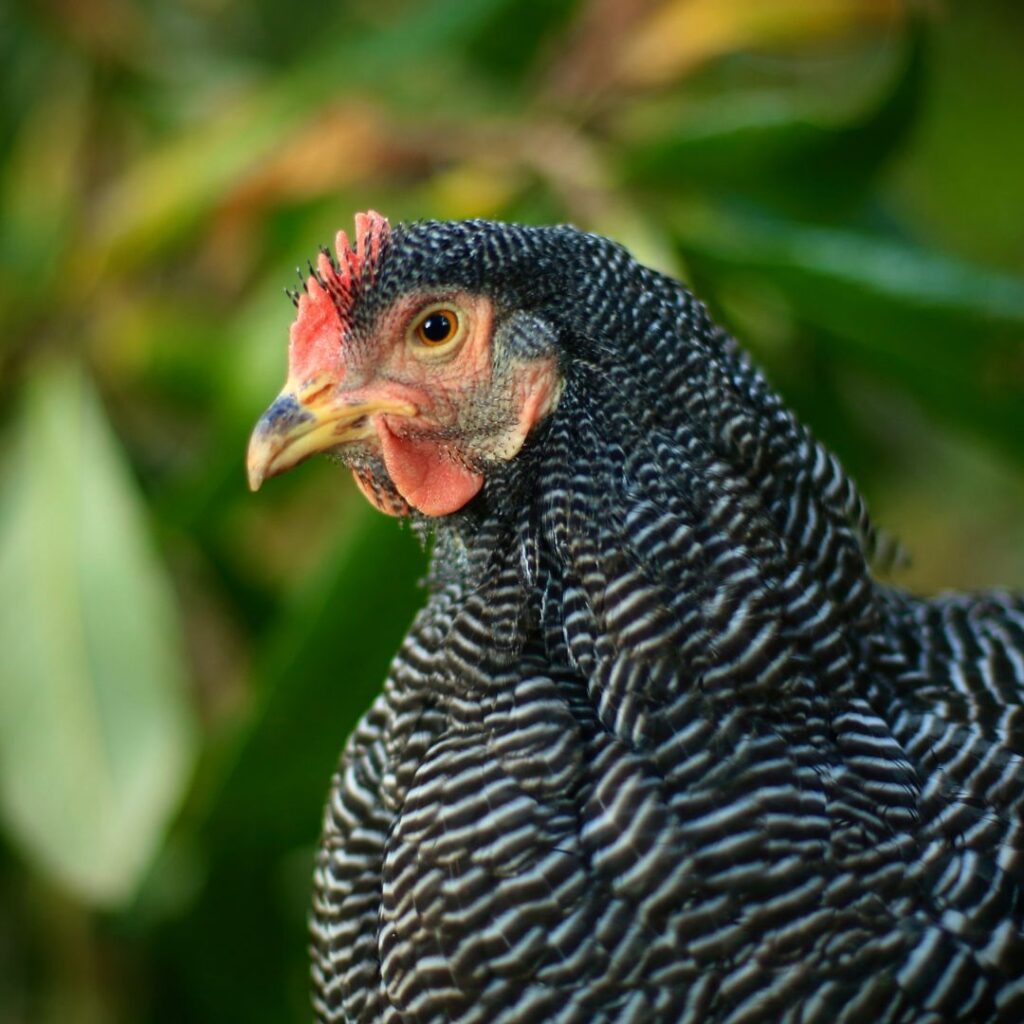
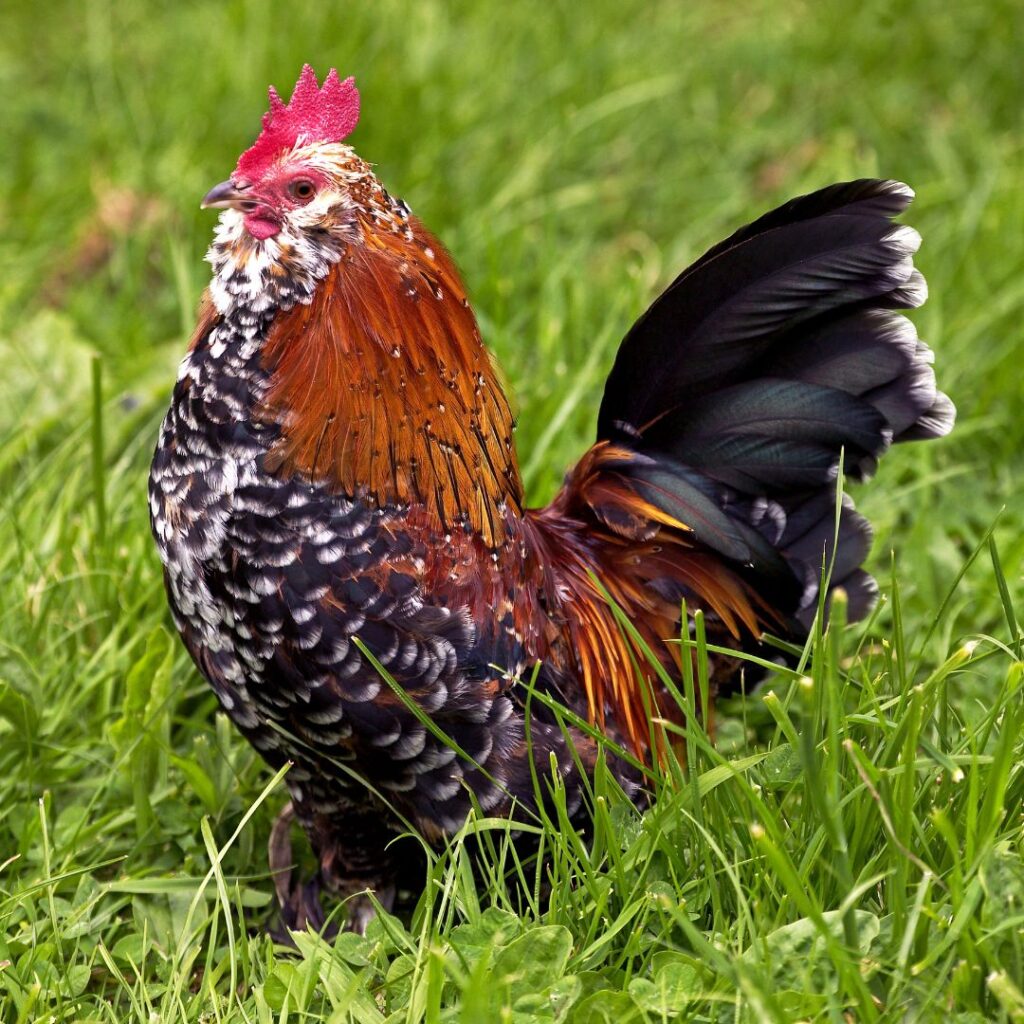
Pingback: Mille Fleur D'Uccle Bantam Chickens; What To Know
Pingback: Ameraucana Chickens; About These Blue Egg Layers (Not Chicken Americana) - Gilmore's
Pingback: Leghorn Chickens: What To Know Before Buying One - Gilmore's
Pingback: Brahma Roosters and Hens: All About
Pingback: Cornish Chickens: A sweet Heritage Breed - Gilmore's
Pingback: Raising Backyard Chickens; Tips For Beginners - Gilmore's
Pingback: What chickens can Teach Children, A Great Pet Choice - Gilmore's